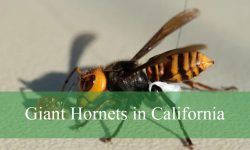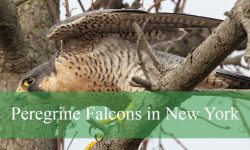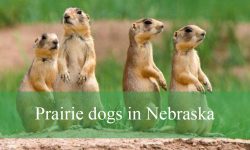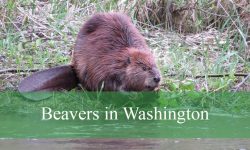South Dakota is home to a fascinating variety of woodpeckers, each with unique colors, behaviors, and calls. From the tiny Downy Woodpecker to the towering Pileated Woodpecker, these birds add life and sound to forests, parks, and even suburban backyards. Observing them provides a glimpse into their secretive and industrious world.
Exploring the dense Black Hills or the river valleys of eastern South Dakota offers countless opportunities to hear drumming and spot woodpeckers. Some species, like the Red-headed Woodpecker, stand out with their vivid plumage, while others, such as the Black-backed Woodpecker, require careful observation in specialized habitats.
This guide covers 12 woodpecker species in South Dakota, including identification tips, behavior, diet, and best locations for spotting them. Detailed descriptions and photos make it easy for birdwatchers of all levels to recognize and appreciate these remarkable birds.
Types of Woodpeckers Found in South Dakota
Downy Woodpecker
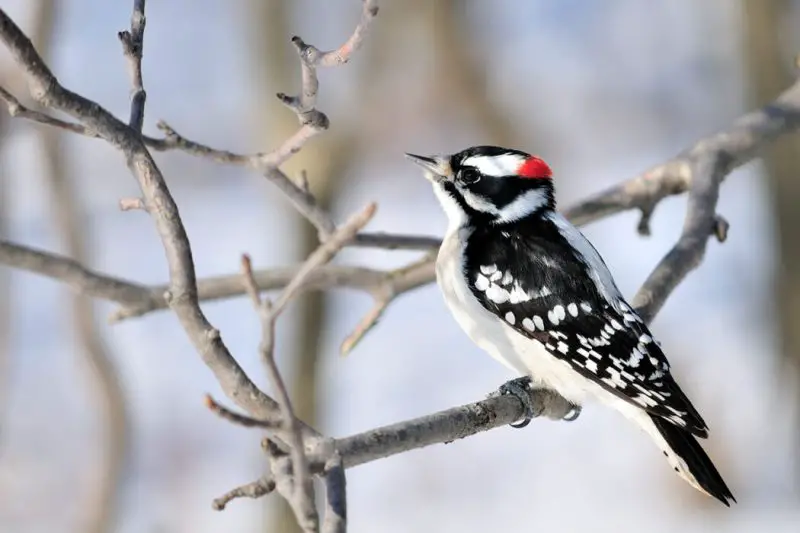
The Downy Woodpecker is the smallest woodpecker species in South Dakota, often recognized by its black-and-white plumage and small size. Males have a small red patch on the back of their heads, while females lack this marking. Their compact body, short bill, and checkered wings make them fairly easy to identify, especially when compared to their larger look-alike, the Hairy Woodpecker.
This woodpecker typically measures around 6–7 inches in length, with a wingspan of about 10–12 inches. Despite its small stature, it has a strong and sharp bill that it uses to tap on trees in search of food. The Downy is often seen clinging to thin branches and twigs where larger woodpeckers cannot balance.
Downy Woodpeckers thrive in a variety of habitats across South Dakota, from woodlands and riparian forests to backyards and parks. They are year-round residents, often spotted visiting bird feeders during winter months, especially when suet or sunflower seeds are offered. Their adaptability to both wild and urban environments makes them one of the most common woodpeckers in the state.
In terms of diet, they feed mainly on insects such as beetle larvae and ants, but they also enjoy berries and seeds. A fun fact about the Downy Woodpecker is that it sometimes forages among goldenrod plants in late summer, pecking open the stems to reach insect larvae inside—an unusual feeding habit that sets it apart from other woodpeckers.
Hairy Woodpecker
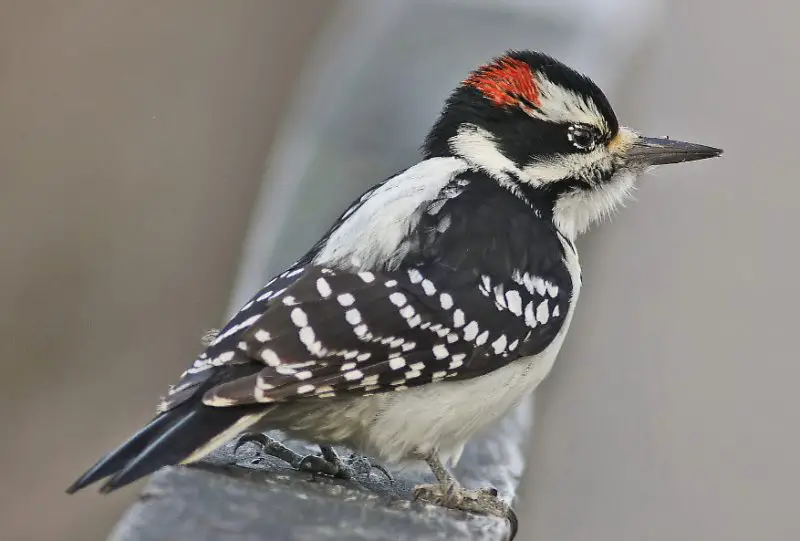
The Hairy Woodpecker is a close relative of the Downy but is larger and has a noticeably longer bill. It also has striking black-and-white plumage, with a broad white patch running down its back. Males display a small red spot at the back of the head, while females do not. The clean patterns and strong features give it a bold appearance.
Typically, the Hairy Woodpecker measures between 9–10 inches long, making it about one-third larger than the Downy. Its long, chisel-like bill is proportionate to its head, which is one of the best ways to distinguish it from the smaller Downy. Their calls are sharp and piercing, and they also produce a rapid drumming sound when communicating or claiming territory.
This species prefers mature forests, wooded river valleys, and large urban parks across South Dakota. Unlike the Downy, which adapts well to shrubs and smaller trees, the Hairy is often seen in taller trees where it searches for insects beneath thick bark. It also occasionally visits suet feeders in residential areas, especially during colder months.
Hairy Woodpeckers mainly eat wood-boring insects such as beetle larvae, ants, and caterpillars, but they will supplement their diet with seeds and berries. A fun fact is that these woodpeckers often follow the feeding trails of sapsuckers, taking advantage of sap wells and insects attracted to the sticky fluid.
Northern Flicker
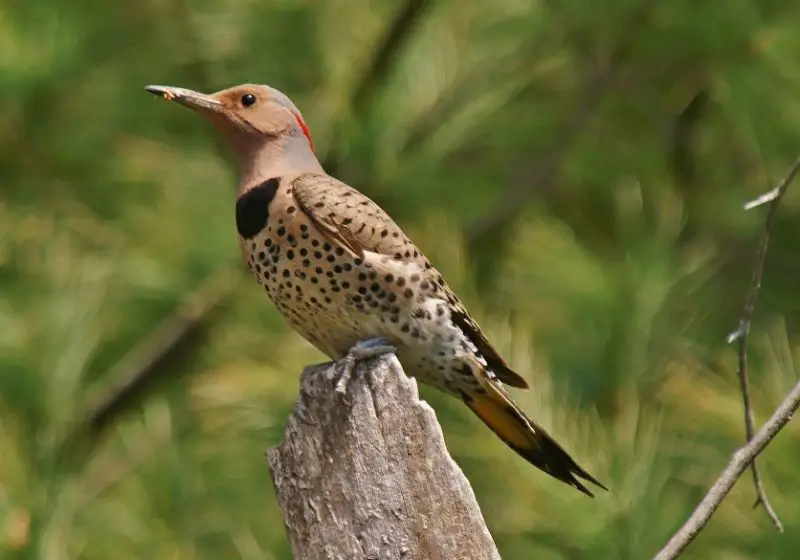
The Northern Flicker is one of the most distinctive woodpeckers in South Dakota, easily recognized by its brown body with black bars, spotted belly, and black crescent-shaped bib on the chest. When in flight, its bright yellow underwings and rump patch flash vividly, making it stand out among other species.
Flickers are among the largest woodpeckers in the region, reaching 11–12 inches in length with a wingspan of up to 21 inches. They have a slightly curved bill and a long, pointed tail that aids in stability when foraging on the ground. Unlike many woodpeckers, they spend much of their time on the ground rather than on tree trunks.
They inhabit open woodlands, forest edges, prairies with scattered trees, and suburban yards throughout South Dakota. Flickers are migratory, with some staying year-round in the southern parts of the state, while others move south during winter. Their loud “wick-a-wick-a-wick” call and rapid drumming can often be heard echoing through open habitats.
Unlike most woodpeckers that search bark for insects, Northern Flickers specialize in eating ants and beetles from the ground. They use their long, sticky tongues to extract prey from soil and anthills. A fun fact is that flickers are sometimes seen sunbathing on the ground with wings spread, possibly as a method to control parasites.
Red-headed Woodpecker
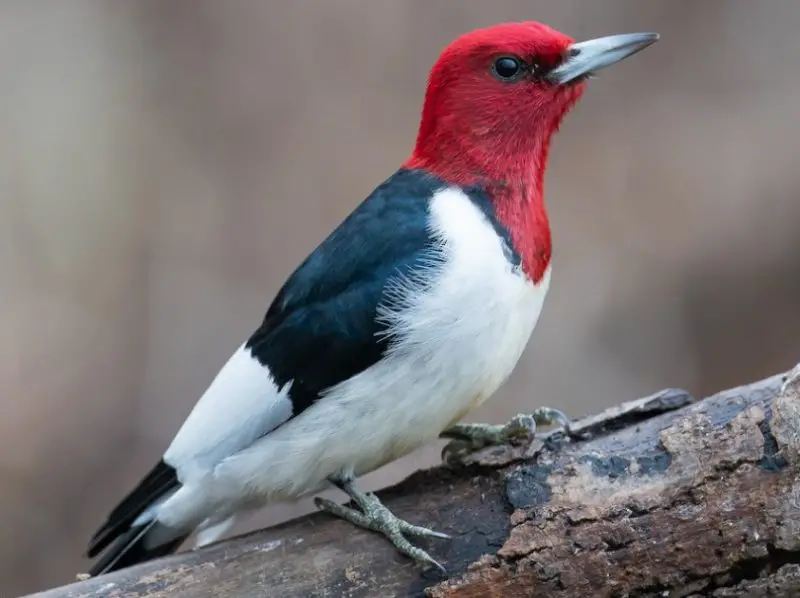
The Red-headed Woodpecker is one of the most striking birds in South Dakota, easily identified by its completely crimson head, snow-white body, and glossy black wings with white patches. Its vivid plumage makes it unmistakable, even from a distance.
This medium-sized woodpecker measures about 8–9.5 inches in length, with a wingspan of 15–17 inches. Both males and females look alike, unlike many other woodpecker species. Their strong, stout bills allow them to excavate trees, catch flying insects, and even store food for later use.
Red-headed Woodpeckers are found in open woodlands, savannas, and near agricultural fields. They prefer areas with dead trees for nesting and perching, often seen perched openly on utility poles or bare branches. In South Dakota, they are more common during the warmer months but some remain year-round in the southeast.
Their diet is highly varied, including insects, acorns, nuts, fruits, and even small vertebrates. Uniquely among woodpeckers, they often catch insects in mid-air, almost like flycatchers. A fun fact is that Red-headed Woodpeckers are one of the few woodpeckers that cache food, stuffing acorns and insects into tree crevices to eat later.
Red-bellied Woodpecker
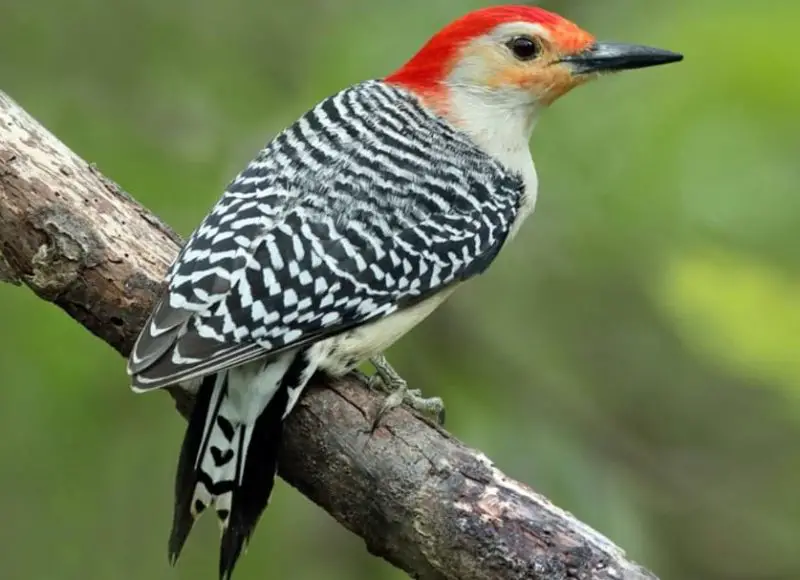
The Red-bellied Woodpecker is a frequent visitor to eastern South Dakota woodlands, though it can be confusingly named. Its “red belly” is usually faint, while the most noticeable feature is the bright red crown and nape in males and a shorter red patch in females. Both sexes have black-and-white barred backs and pale underparts.
These woodpeckers are medium-sized, measuring about 9–10.5 inches in length with a wingspan of 15–18 inches. They have a long, sturdy bill adapted for drilling into bark. Their rolling “churr” call and loud drumming often reveal their presence before they are seen.
In South Dakota, they are mostly found in hardwood forests, river bottoms, and wooded suburban areas. They adapt well to backyard feeders, especially when suet, peanuts, and sunflower seeds are available. Their strong climbing abilities and agility allow them to move quickly up and down tree trunks.
Their diet consists of insects, spiders, fruits, acorns, and seeds. Red-bellied Woodpeckers also have a habit of storing food in tree bark for later consumption. A fun fact is that their long, barbed tongues can extend nearly two inches beyond their bills, allowing them to pull insects out of deep crevices.
Pileated Woodpecker
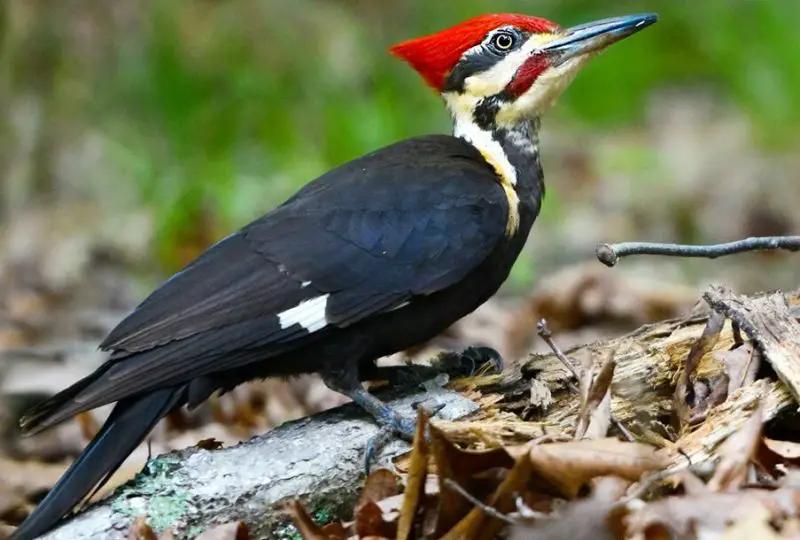
The Pileated Woodpecker is the largest woodpecker in South Dakota and one of the most iconic in North America. Its striking black body, white wing patches, and flaming red crest make it instantly recognizable. It resembles the famous cartoon character “Woody Woodpecker.”
This impressive bird measures 16–19 inches long, with a wingspan of up to 30 inches. Its powerful chisel-like bill is used to excavate large rectangular holes in trees, sometimes so big that they alter the shape of entire trunks. Males can be identified by a red stripe on the cheek, while females lack this feature.
Pileated Woodpeckers prefer mature forests with large, decaying trees. In South Dakota, they are more common in the eastern woodlands but can also be found in protected riparian zones. Their loud, echoing call and heavy drumming can often be heard long before the bird is spotted.
They primarily eat carpenter ants, beetle larvae, and other wood-boring insects, but also consume berries and nuts. A fun fact is that their large cavities not only provide homes for themselves but also become nesting sites for owls, ducks, and other birds once abandoned, making them essential to forest ecosystems.
Black-backed Woodpecker
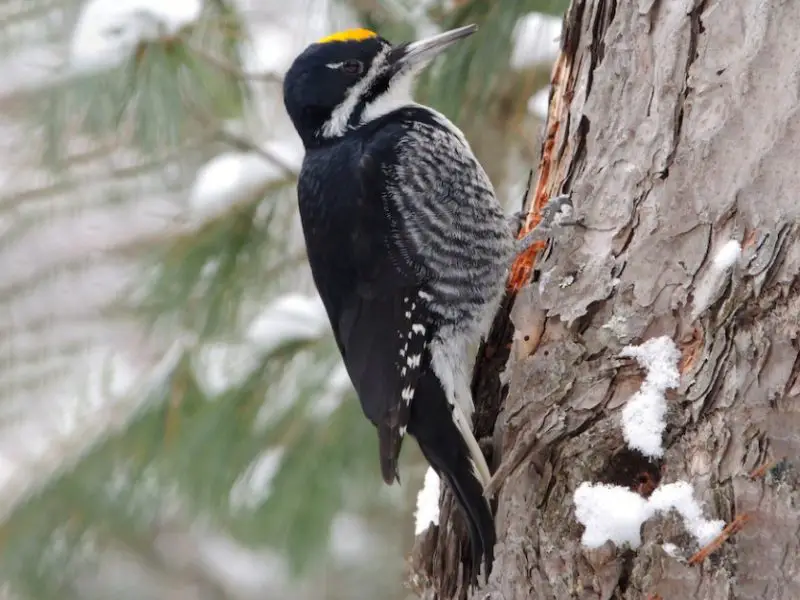
The Black-backed Woodpecker is a rare and specialized resident of South Dakota, often found in recently burned forests where it thrives on wood-boring beetle larvae. It has glossy black plumage on the back, a white belly, and a distinctive white stripe along the face. Males feature a small yellow crown patch, while females do not.
This species measures about 9–9.5 inches in length with a wingspan of around 15–16 inches. Its short, sturdy tail and strong claws allow it to cling easily to charred tree trunks. Unlike many other woodpeckers, the Black-backed has only three toes instead of four, an adaptation that helps it grip vertical surfaces more efficiently.
In South Dakota, it is most likely to be found in the Black Hills, particularly in areas that have experienced wildfires within the last decade. This bird relies on beetle-infested snags and dead trees, making it a key indicator of healthy post-fire ecosystems.
The diet consists primarily of wood-boring beetle larvae, which it extracts by flaking off bark with its strong bill. A fun fact about the Black-backed Woodpecker is that it is sometimes referred to as a “fire bird” because its population numbers often increase dramatically in the years following a wildfire.
American Three-toed Woodpecker
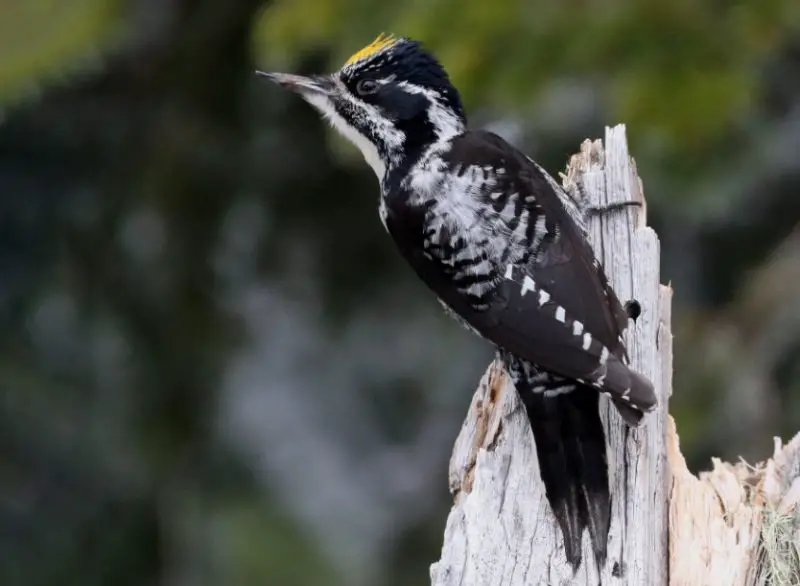
The American Three-toed Woodpecker is another uncommon species in South Dakota, resembling the Black-backed Woodpecker but with barred white and black flanks. Males have a small yellow crown patch, while females do not. Its patterned back provides excellent camouflage against tree bark.
It measures about 8.5–9 inches in length, making it slightly smaller than the Black-backed. Like its close relative, it has only three toes instead of four, giving it its name. Its bill is strong and slightly chisel-like, well adapted for peeling bark to reach insects beneath.
This woodpecker is primarily found in the coniferous forests of the Black Hills. It prefers mature spruce and pine stands, especially where tree die-offs from beetles or disease provide plentiful foraging opportunities. Though less common than other woodpeckers, it plays a critical role in keeping insect populations in check.
Its diet is dominated by bark beetles and wood-boring insects. A fun fact about the American Three-toed Woodpecker is that it often forages quietly, peeling away bark in long strips rather than loudly hammering, which makes it surprisingly difficult to detect despite its size.
Yellow-bellied Sapsucker
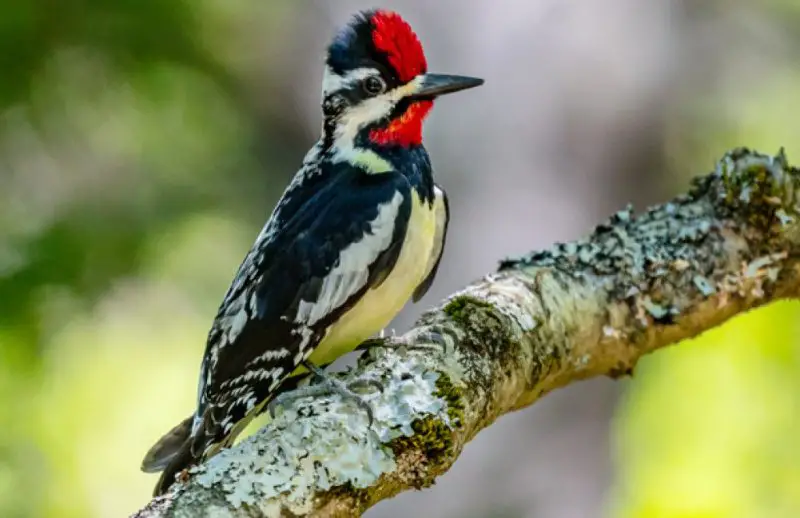
The Yellow-bellied Sapsucker is a migratory woodpecker that visits South Dakota during spring and fall. It is identifiable by its white wing patch, vertical white stripes on the sides, and a pale yellow wash on the belly. Males have a bright red throat, while females have a white throat. Both sexes share the red crown and black-and-white facial pattern.
This medium-sized woodpecker measures 7.5–8.5 inches in length, with a wingspan of 13–16 inches. Its slightly thinner bill compared to other woodpeckers is adapted for drilling neat rows of small sap wells in tree bark. The bird frequently returns to these wells to drink sap and eat insects attracted to the sticky fluid.
In South Dakota, Yellow-bellied Sapsuckers can be found in deciduous forests and woodlands during migration. They often stop in parks and orchards, where they may be observed drilling their characteristic rows of holes in tree trunks. Unlike most woodpeckers, they are not year-round residents in the state.
Their diet includes tree sap, insects trapped in the sap, and fruits. A fun fact is that their sap wells benefit other species such as hummingbirds, bats, and warblers, which take advantage of the sweet resource they create.
Lewis’s Woodpecker

Lewis’s Woodpecker is one of the most unique woodpeckers in South Dakota due to its unusual coloration. Unlike the typical black-and-white woodpecker pattern, it has a dark greenish-black back, pinkish belly, gray collar, and red face. Its striking colors and smooth plumage make it easy to distinguish.
This woodpecker is fairly large, measuring about 10–11 inches in length with a wingspan of 19–20 inches. Unlike most woodpeckers that rely heavily on drumming and excavating, Lewis’s Woodpecker often catches insects in mid-air, using a flight style that resembles a crow’s gliding and swooping.
In South Dakota, they are occasionally found in open pine woodlands and burned areas, particularly in the western part of the state. They prefer open habitats with scattered trees rather than dense forests. During breeding season, they excavate nest cavities in dead trees or old utility poles.
Their diet is varied, including flying insects, nuts, and fruits. A fun fact is that Lewis’s Woodpecker often stores acorns and nuts in tree crevices, caching them for winter use, much like jays or nuthatches—an unusual behavior for a woodpecker.
Williamson’s Sapsucker
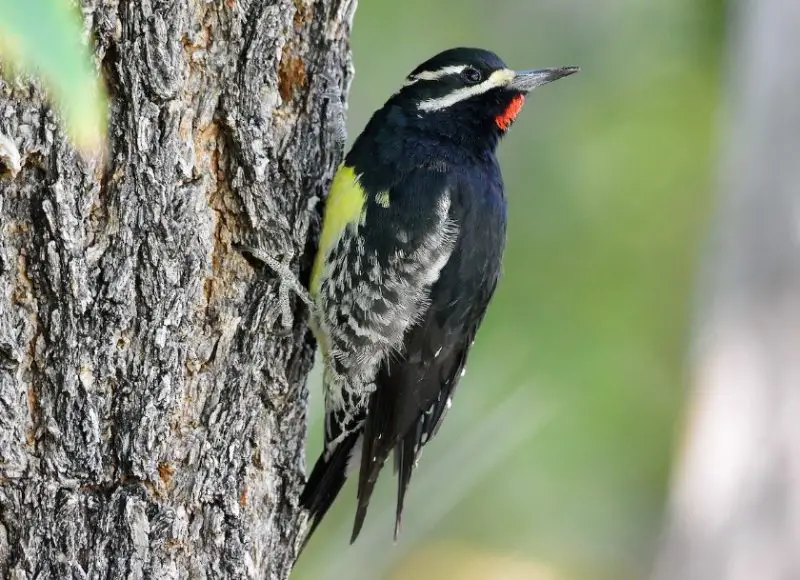
Williamson’s Sapsucker is a striking yet less common woodpecker in South Dakota, known for its dramatic sexual dimorphism. Males are mostly black with bold white wing patches and a bright red throat, while females have a barred brown-and-white back with yellow underparts. This difference makes them appear almost like two separate species.
This species measures about 8–9.5 inches long, with a wingspan of 14–16 inches. Both sexes share the habit of drilling sap wells into tree bark. Their bills are slightly shorter than other woodpeckers, adapted specifically for this feeding technique.
In South Dakota, they are most often found in the Black Hills, where coniferous forests provide ideal nesting and foraging grounds. They prefer mixed stands of pine and spruce and are more likely to be seen during the breeding season.
Their diet includes tree sap, ants, beetles, and berries. A fun fact about Williamson’s Sapsucker is that males and females not only look different but also use different habitats and feeding areas within the same territory, reducing competition between the sexes.
Ladder-backed Woodpecker

The Ladder-backed Woodpecker is one of the less common species in South Dakota, more typical of arid and scrubby regions. It is identified by its black-and-white barred back, resembling the rungs of a ladder, and a pale buff belly with dark spots. Males also have a red crown patch, while females lack it.
It measures about 6.5–7.5 inches in length, making it one of the smaller woodpeckers. Its slender bill is well adapted for probing into cactus, yucca, and small trees where insects hide. The species is quick and active, often moving rapidly among branches.
In South Dakota, Ladder-backed Woodpeckers are rare visitors, mainly found in the extreme southwestern parts of the state. Their preferred habitats include dry scrublands, desert edges, and open woodlands with sparse tree cover.
They primarily eat ants, beetles, caterpillars, and other insects but will also take seeds and fruits. A fun fact is that this woodpecker is highly tolerant of hot, dry environments, making it well suited for regions where other woodpeckers cannot thrive.
Best Time and Place to See Woodpeckers in South Dakota
Woodpeckers can be spotted throughout the year in South Dakota, but the best time to see them depends on the species. Resident species like the Downy, Hairy, Red-bellied, and Pileated Woodpeckers are active year-round, even in the depths of winter when they frequently visit backyard feeders. Spring and early summer bring more activity as males drum loudly to establish territories and attract mates, making them easier to detect by sound. Migratory species such as the Yellow-bellied Sapsucker and Lewis’s Woodpecker are best observed during spring and fall migration when they pass through the state or settle briefly in open woodlands.
The Black Hills region in western South Dakota is one of the most reliable places to find a wide range of woodpeckers, including the rare Black-backed and American Three-toed Woodpeckers that thrive in burned or beetle-affected coniferous forests. Mature pine and spruce stands provide excellent opportunities to spot these specialists. Meanwhile, the eastern woodlands and river valleys are prime habitats for Red-headed, Red-bellied, and Pileated Woodpeckers. State parks, wildlife refuges, and riparian corridors are particularly productive for birdwatchers.
For those looking to enjoy close encounters, backyard bird feeders are a wonderful way to attract Downy and Hairy Woodpeckers, especially during winter when natural food sources are scarce. Suet cakes, peanuts, and black oil sunflower seeds are favorites that will keep them returning. Observing these birds up close provides a chance to appreciate their detailed plumage, drumming habits, and unique foraging behaviors without leaving your yard.
Overall, the best times to look for woodpeckers are early mornings and late afternoons, when they are most active in feeding and drumming. Visiting areas with a mix of old trees, dead snags, and forest edges will maximize your chances of spotting multiple species. Whether exploring the Black Hills, wandering along river corridors, or simply watching your backyard feeders, South Dakota offers countless opportunities to enjoy these fascinating birds.
FAQs About Woodpeckers in South Dakota
What types of woodpeckers are found in South Dakota?
South Dakota hosts a variety of woodpeckers, including common residents like the Downy, Hairy, Red-bellied, Red-headed, Northern Flicker, and Pileated Woodpecker. Less common species such as the Black-backed, American Three-toed, Yellow-bellied Sapsucker, Lewis’s, Williamson’s Sapsucker, and Ladder-backed Woodpecker can also be seen, particularly in specialized habitats or during migration.
When is the best time to see woodpeckers in South Dakota?
Resident woodpeckers are active year-round, but spring and early summer are ideal for observing territorial drumming and courtship behaviors. Migratory species, like the Yellow-bellied Sapsucker and Lewis’s Woodpecker, are best seen during spring and fall migration when they briefly pass through or settle in suitable habitats. Early mornings and late afternoons provide peak activity.
Where can I find woodpeckers in South Dakota?
The Black Hills in western South Dakota are excellent for finding rare species like the Black-backed and American Three-toed Woodpeckers, especially in burned or beetle-affected forests. Eastern woodlands, river valleys, state parks, and suburban areas are ideal for common species such as Pileated, Red-bellied, and Red-headed Woodpeckers. Backyards with feeders also attract Downy and Hairy Woodpeckers.
What do woodpeckers eat in South Dakota?
Most woodpeckers feed primarily on insects like beetle larvae, ants, and caterpillars, but many also eat seeds, nuts, berries, and tree sap. Migratory species like the Yellow-bellied Sapsucker specialize in drilling sap wells, while Lewis’s Woodpecker supplements its diet with flying insects and cached nuts. Pileated Woodpeckers are especially known for excavating large holes to access carpenter ants.
Do woodpeckers drum on houses or utility poles?
Yes, woodpeckers drum on hard surfaces as part of their territorial behavior or to attract mates. In South Dakota, Pileated, Red-headed, and Hairy Woodpeckers may occasionally drum on utility poles, fences, or even wooden siding. Providing designated feeding stations or suet blocks can help divert them from causing damage.
Are any woodpeckers in South Dakota endangered or rare?
While most woodpeckers are stable in population, species like the Black-backed, American Three-toed, and Williamson’s Sapsucker are considered uncommon or rare in South Dakota due to their specialized habitats. Conservation of mature forests and post-fire landscapes is essential for their survival.
How can I attract woodpeckers to my backyard?
Offering suet, peanuts, and sunflower seeds in feeders is highly effective for attracting woodpeckers, particularly Downy, Hairy, and Red-bellied species. Planting native trees and leaving dead snags can provide natural foraging and nesting sites, making your yard more appealing to a wider range of woodpeckers throughout the year.

